Special Education
Educational Advocacy
Over half of children in foster care have a learning disability. These specialized needs, compounded by frequent moves, emotional distress, and instability, can dramatically affect a foster child’s ability to succeed in school. As a CASA, you can help ensure that these challenges are minimized and that your youth receives the additional help they need.
Students with special education needs are primarily served by Individualized Education Plans (IEP) or 504 Plans.
Understood is an excellent resource for learning more about all facets of special education. SFUSD has published an IEP Handbook to address any IEP questions and/or concerns you may have. SF CASA will be provided with a limited supply of the handbook and can provide CASAs with one while supplies last. Just ask your Case Supervisor.
What is in an IEP?
An IEP provides a tailored support and academic instruction plan for a student. Each IEP must have the following components:
Present Level of Performance: This is a statement on how your youth is currently doing in school. It is based on both teacher observations and objective data, such as test scores, and describes the student’s strengths, weaknesses, and skills.
Annual Education and/or Emotional Goals: These goals should be measurable and achievable within a year. Students with severe disabilities may have short-term goals.
Accommodations: These supports and services should be provided by the school. These may include but are not limited to: extra time, frequent breaks, and seating in another room.
Measuring and Reporting Progress: The Educational Specialist (SpEd Teacher) is required to track the student’s progress and share those results with the academic team; this includes you.
Individual Transition Plan (ITP): This is applicable once a student is 16 years of age. Its focus is high school graduation and plans for life after high school. Start having those conversations with the youth you support!
Eligibility for an IEP: There are 13 disabilities that qualify a student for Special Education.
Supports
The diagnosis of a disability does not automatically mean that the student will be placed in another classroom or given a new teacher. There is an array of programs that can be customized to accommodate the student’s needs. Modifications to their schedule, materials, routine can be made. They may receive extra time on tests or be permitted to test in another room. Additional services such as counseling and mental health support, occupational and/or physical therapy may be provided in conjunction with the student’s general education.
Getting an IEP
Be sure to speak first with their caregiver and case worker before making a request. To request an evaluation, you will need to write a referral letter including the reasons you believe the youth may qualify for an IEP.
After receiving the letter, the school is required to respond within 15 days. If consenting, the school psychologist or another professional may give your foster youth a variety of tests or observe them in the classroom. An IEP team -- including the caregiver, the educational rights holder (if different than the caregiver), the teacher, and school officials -- will decide whether the student needs special education and develop an IEP. The school has 60 days from their response date to complete this process. Stay involved throughout and work with your child’s caregiver to monitor progress.
What you can do as an advocate
Attend meeting in person or over the phone
Review your youth’s IEP. If you need support understanding the IEP or preparing for a meeting, ask your Case Supervisor or the CASA Educational Advocacy Specialist.
Keep your youth’s IEP goals in mind and check on their progress quarterly
Ask lots of questions and share your understanding of youth’s strengths and needs
With high school students:
Ensure that transition goals are fleshed out
Connect your youth to appropriate post-secondary resources and opportunities (e.g. college disability services, work opportunities)
What is a 504 Plan?
A 504 Plan is created for students with disabilities who DO NOT require specialized instruction, but DO require accommodations to ensure their academic success.
The Section 504 of the Rehabilitation Act assures that students will receive equal access to public education and services by outlining their unique accessibility requirements. A 504 Plan should be updated annually to ensure that the student is receiving the most effective accommodations for his/her specific circumstances. Some examples of 504 accommodations are:
preferential seating.
extended time on tests and assignments.
reduced homework or classwork.
verbal, visual, or technology aids.
modified textbooks or audio-video materials.
behavior management support.
adjusted class schedules or grading.
verbal testing.
Please review the resources and information below to develop your understanding of the rights of foster youth with special educational needs.
Additional Resources:
Special Education - CalEdFacts
Special Ed Assessment Request: Guide and sample request letter
Categories of Disability Under IDEA
Special Education in San Francisco Unified School District
Special Education Alternative Dispute Resolution service
Guide to the IEP (Dept of Education)
Supportive Services at Dept. of Rehabilitation
5 Effective Methods for Building Self-Esteem for Children with Special Needs
Where to Turn When You Have a Concern
Foster Youth Education Task Force Fact Sheet
Support for Families: workshops, a phone line, support groups, and more for families of children with disabilities.
